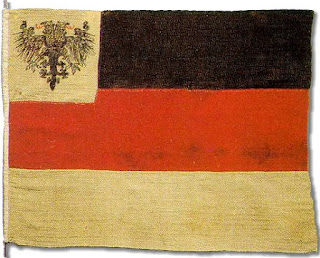In 1838 he finished his PhD and in 1839 began traveling the world in search of "lost" and forgotten New Testament manuscripts in order to "to clear up in this way, " he wrote, "the history of the sacred text, and to recover if possible the genuine apostolic text which is the foundation of our faith." In a career reminiscent of Indiana Jones, he traveled extensively throughout Europe and the Near and Middle East.
In 1840 he was appointed chair for Theology at Leipzig. The same year he translated the Codex Ephraemi Syri which no scholar had been able to decipher.
Much of his travel was supported financially by the Saxon and Russian governments. In fact, Tischendorf was made a Count of the Russian Empire. He edited and published many of the works he found.
In 1844 he visited Saint Catherine's Monastery on Mount Sinai for the first time. This was a unique period in time where wealthy Europeans were at liberty to poke around and explore the hidden corners of the Middle East, a fact which still incites much jealousy in me. His curiosity led him serendipitously to a trash heap where he discovered several pages of what was then oldest known copy of the Septuagint.
These pages were archived at the University of Leipzig. On his third visit many years later he discovered the remainder of the text. It contained the New Testament, part of the Old Testament, and other early writings. This was the famous Codex Sinaiticus- the oldest known manuscript of the Greek Bible.
Among many other academic contributions, the crowning acheivement of his career was his 8th edition of the Codex Sinaiticus which included extensive critical notes and analysis. He labored on the text from 1865 - 1872. It remains a standard tool of reference for Biblical Greek studies in the West. In the Christian East it is well respected although not the final authority on textual questions.
 One of Tischenforf's descendants, Klaus Zehnder-Tischendorf, maintains a website dedicated to him here.
One of Tischenforf's descendants, Klaus Zehnder-Tischendorf, maintains a website dedicated to him here.What makes Tischendorf pertinent on this blog? In addition to being the nexus of German and Russian Christianity, Tischendorf's work will be discussed by priest-monk Justin Sinaites from Saint Catherine's Monastery.
Fr. Justin is an Orthodox Christian monk who was born in Texas but is now serving as the librarian at St. Catherine's Monastery where he is preserving and digitizing ancient manuscripts. He is one of several scholars working on the Codex Sinaiticus project. Fr. Justin's presentation is entitled "The Sinai Codex Theodosianus: Manuscript as Icon". It will be held Wednesday, February 4 in Denton, Texas.












